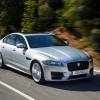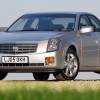
RAC sale – up to 33% off*
• Roadside cover from £5.29 a month†
• We get to most breakdowns in 60 mins or less
• Our patrols fix 4/5 breakdowns on the spot

BY ANDY ENRIGHT
Introduction
The S80 is something of a landmark vehicle for Volvo. For the first time in years, the Swedish company produced a range-topping saloon without an estate variant. Given that upper-range Volvos have traditionally sold better in estate form, that's a huge testament to their confidence in the S80 saloon's ability to stand on its own two feet. As a used buy Volvos have always given good value, but in a crowded corner of the market does the big S80 measure up?
Models
Models Covered:
(4dr saloon, 2.4, 2.4T, 2.8, 2.9 petrol, 2.5 diesel [base, S, SE]))
History
The S80 received the best press reaction of any Volvo when it was launched in 1998. The motoring press gushed over its comfort, safety features and composed driving characteristics. Four petrol engines and one diesel were on offer, all with the same, shockingly curvaceous (for a Volvo) four-door saloon body. Two different versions of the 2.4-litre five-cylinder petrol engine were available, offering either 140bhp or a more purposeful 170bhp. A six-cylinder 2.9 was also offered, with a smooth 204bhp being deployed to the front wheels. The final six-cylinder engine was the 2.8 T6, a turbocharged engine pumping out a dizzying 272bhp. The sole diesel offering was the 2.5-litre 140bhp turbo diesel.
Originally all models came either as standard or in luxurious SE trim. In 2000, Volvo felt the gulf between these two trim levels was too much and launched the 'stepping-stone' S designation for all models bar the T6 cars. Standard trim was dropped with price cuts introduced in September 2000, with 'S' now the entry trim level. An 'Executive' flagship model based on the 2.9 V6 was introduced for the 2001 model year, and was also joined by a D5 diesel based on the 2.4-litre five-cylinder engine architecture. This diesel was Volvo's first and proved little slower than the 2.4-litre petrol but returned an average of over 46mpg. In 2002 a 2.4T version with 200bhp was launched.
What You Get
What you get with the S80 is a car that needs absolutely no apologies. Previous big Volvos had little charisma and were all too often the preserve of shooting set wannabes and harmless cranks, but the S80 is a car that appeals on many levels. It's billed as ''the world's safest car'' - and it's hard to argue. There are airbags everywhere; two at the front and two at the side, all of which have been programmed to activate less aggressively. Plus there's an inflatable curtain which covers the side windows and protects the occupant's head in a lateral impact.
On top of all that and class leading side, front and rear impact protection, there's also WHIPS (Volvo's new 'whiplash protection system'). In the event of an impact, the whole seat moves backwards to absorb the initial impact and prevent the body being catapulted forwards. Simultaneously, the upper part of the seat moves up and forward to protect the neck and spine. The result should reduce the likelihood of whiplash injuries by as much as 50%.
All of this trickery has created a longer wheelbase which, in turn, allows for a bigger passenger compartment. Indeed, take a long trip in an S80 after spending time in one of its German rivals and it isn't long before you appreciate the fact. Wherever you're sitting, there's more room for arms, legs and shoulders. You could almost be in a car from the next class up.
Look around you and the detailing is superb. It isn't only that the car comes loaded with equipment - you'd probably expect that. No, it's the detail touches you remember. The front console-mounted telephone buttons, the telephone loudspeaker in the driver's headrest, the remotely operable lights that enable you to approach or leave the car in greater safety. There's a genuinely impressive depth of reasoning behind the S80.
What You Pay
Please fill in the form here for an exact up-to-date information.
What to Look For
The S80 wouldn't be a 'proper' big Volvo unless it was looking forward to clocking up a quarter of a million miles or so in its lifetime, all the while offering excellent reliability. Whilst it's too early to judge whether this will be the case, first impressions are good. During endurance tests of prototype S80 models, Volvo engineers built in an unprecedented margin of 'mechanical redundancy' - in other words they over-specified the performance of every moving part to guarantee reliability to a degree not seen before. Who said all modern cars were built down to a price?
Replacement Parts
(approx based on a 1998 2.8 T6 SE) Middle of the road prices for this above average executive contender. A clutch assembly is around £190, whilst an exhaust system is in the region of £400. Thin front brake pads will require the thick end of £60, whilst rears are £40 a pair. A new alternator will require alternate plans for £180, but a new starter motor is a fairly reasonable £120. A replacement headlamp is £180.
On the Road
Features such as whiplash protection systems and curtain airbags are mightily impressive but the Swedes are well aware that more active virtues will be needed to persuade owners of prestige German marques to part with their enamelled key fobs. Since the S80 is front, rather than rear wheel driven, you shouldn't expect it to handle like a BMW - nor does it. We're talking fine detail here, however. There's not an enormous gulf between the Volvo and its rivals at Audi and Mercedes when it comes to hurling the car round the twisty stuff. Refinement and ride quality are equally outstanding.
Under the bonnet, almost all of the engine technology is brand new. In the six-cylinder range, most buyers will choose the 204bhp 2.9-litre variant, which makes sixty in 8.2s on the way to 146mph. A fortunate few will opt for the flagship T6, which boasts an even faster 272bhp 2.8-litre twin-turbo six, with performance equivalent to a V8. Here, sixty is 7.2s away en route to 155mph.
So-called 'geartronic' semi-automatic clutchless transmission should help you tame the beast and will eventually, like the DSTC stability control system, be offered on the other more affordable versions. Here, there's a choice of 2.4-litre five-cylinder petrol engines developing either 140 or 170bhp or a 2.5-litre turbo diesel. Plus, as mentioned, you can even order a Bi-Fuel version, with a combination of gas and petrol power.
An awful lot of work has gone into making sure that all this hardware is effectively packaged. You may not care, for example, that the engineers have mounted the six-cylinder engines transversely or mated them to the world's shortest gearbox - but you'll feel the benefit at the wheel, with acres of legroom for the driver and passenger. The S80 may not challenge the sporting credentials of a BMW 5 series, but to be frank, when a car is this comfortable and beautifully engineered who cares?
Overall
A Volvo S80 is not the hottest used bargain that springs to mind - in fact it's very expensive. This function of supply and demand should give you a clue as to the car's desirability. All models are sought after, but if a recommendation were to be made, an automatic S80 2.9 would have to be it. No, it won't appeal to those looking for a sub 9-minute lap of the Nurburgring, but to criticise the on-limit handling is grotesquely missing the point. The S80 offers comfort, features and safety in one of the most coherent, appealing and considered packages around. Thought Volvos weren't for you? A drive in the S80 will challenge your preconceptions.







